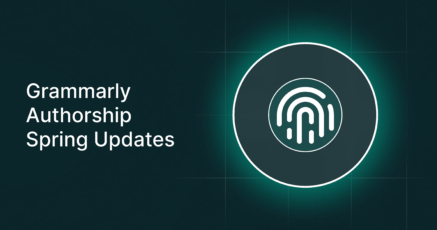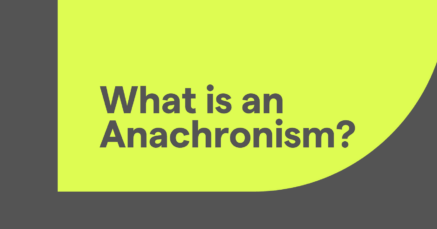Academic Writing
 Grammarly Authorship Just Got a Major Update: Here’s What It Means for Students and InstructorsAt Grammarly, we aim to empower individuals to communicate effectively and authentically. As artificial intelligence (AI) tools...April 22, 2025
Grammarly Authorship Just Got a Major Update: Here’s What It Means for Students and InstructorsAt Grammarly, we aim to empower individuals to communicate effectively and authentically. As artificial intelligence (AI) tools...April 22, 2025 Empowering Student Success: How WGU Leveraged Grammarly’s Writing Score IntegrationAbout Western Governors University Western Governors University (WGU) is a nonprofit, fully online university dedicated to...April 7, 2025
Empowering Student Success: How WGU Leveraged Grammarly’s Writing Score IntegrationAbout Western Governors University Western Governors University (WGU) is a nonprofit, fully online university dedicated to...April 7, 2025 What Is an Anachronism? Definition and ExamplesPlainly put, the definition for anachronism is anything that is out of place in time, such as a modern element appearing in a...December 30, 2024
What Is an Anachronism? Definition and ExamplesPlainly put, the definition for anachronism is anything that is out of place in time, such as a modern element appearing in a...December 30, 2024 Why Grammarly Is a Must-Have for Every StudentFor the past 15 years, Grammarly has been committed to improving students’ written communication. Strengthening basic writing...December 17, 2024
Why Grammarly Is a Must-Have for Every StudentFor the past 15 years, Grammarly has been committed to improving students’ written communication. Strengthening basic writing...December 17, 2024 How to write a How-To Essay: A GuideWriting a how-to essay is an opportunity to teach others how to accomplish something step-by-step. Whether you’re explaining how...November 12, 2024
How to write a How-To Essay: A GuideWriting a how-to essay is an opportunity to teach others how to accomplish something step-by-step. Whether you’re explaining how...November 12, 2024 How to Format a Research Paper: APA, MLA, and Chicago StylesThe rules for academic writing go beyond citing sources and using proper research methods. You also have to adhere to the right...October 23, 2024
How to Format a Research Paper: APA, MLA, and Chicago StylesThe rules for academic writing go beyond citing sources and using proper research methods. You also have to adhere to the right...October 23, 2024 Grammarly Authorship Gives Faculty New Insights Into the Student-AI Writing ProcessIn the second full year of the era of AI in education, academic leaders find themselves in a unique point in time in the AI...October 15, 2024
Grammarly Authorship Gives Faculty New Insights Into the Student-AI Writing ProcessIn the second full year of the era of AI in education, academic leaders find themselves in a unique point in time in the AI...October 15, 2024 How to Write a Grant Proposal: A Step-by-Step GuideWhether you’re a single individual or a large organization, the work you’ve chosen to pursue matters, but how you pay for it...October 11, 2024
How to Write a Grant Proposal: A Step-by-Step GuideWhether you’re a single individual or a large organization, the work you’ve chosen to pursue matters, but how you pay for it...October 11, 2024 Write Authentically in the AI Era With Grammarly AuthorshipWhile students are using AI regularly, they remain concerned about becoming too dependent on it and running the risk of academic...October 8, 2024
Write Authentically in the AI Era With Grammarly AuthorshipWhile students are using AI regularly, they remain concerned about becoming too dependent on it and running the risk of academic...October 8, 2024 How to Write a Discursive EssayDuring your academic career, you may be assigned to write a discursive essay. Structurally and tonewise, a discursive essay has a...October 3, 2024
How to Write a Discursive EssayDuring your academic career, you may be assigned to write a discursive essay. Structurally and tonewise, a discursive essay has a...October 3, 2024